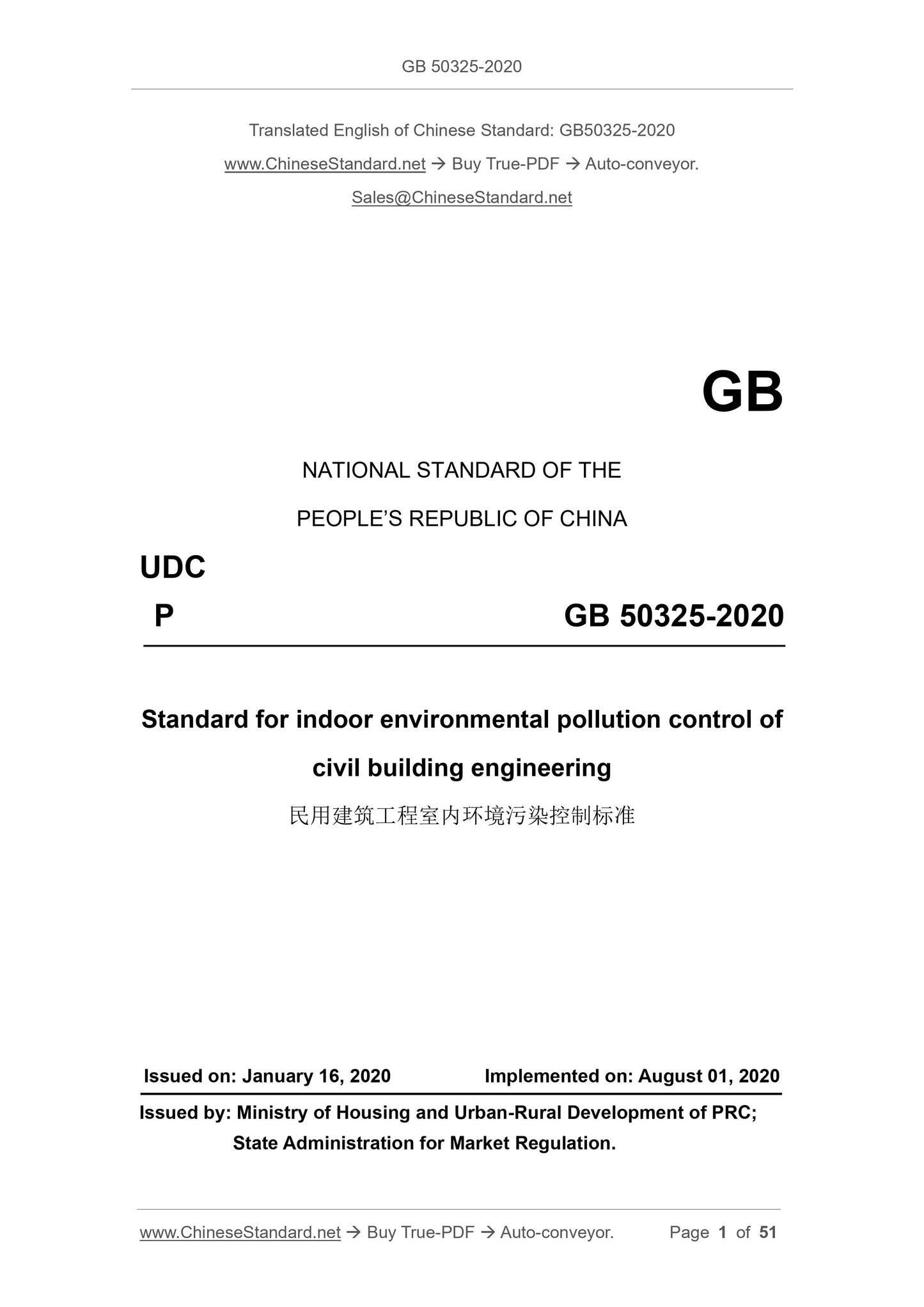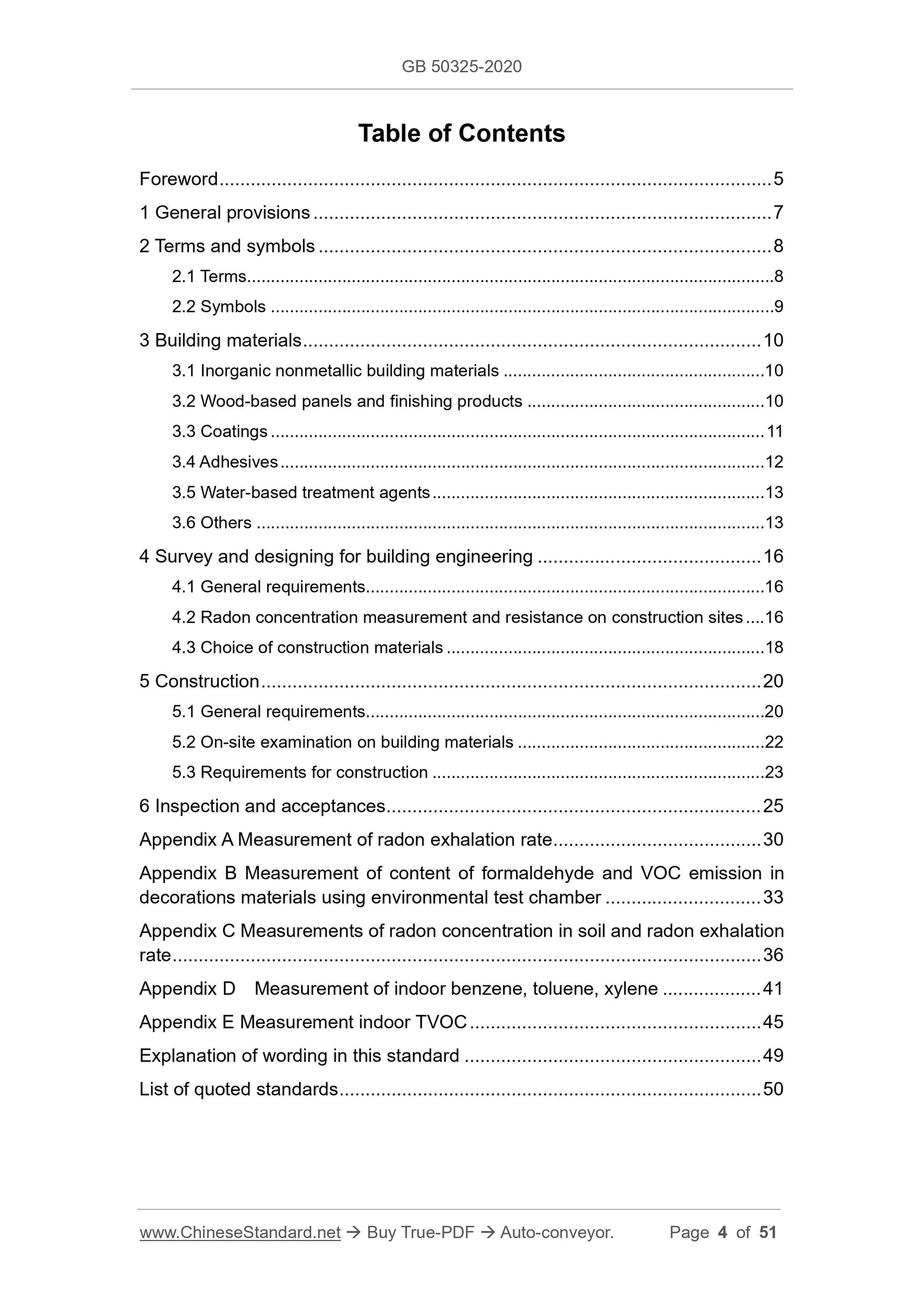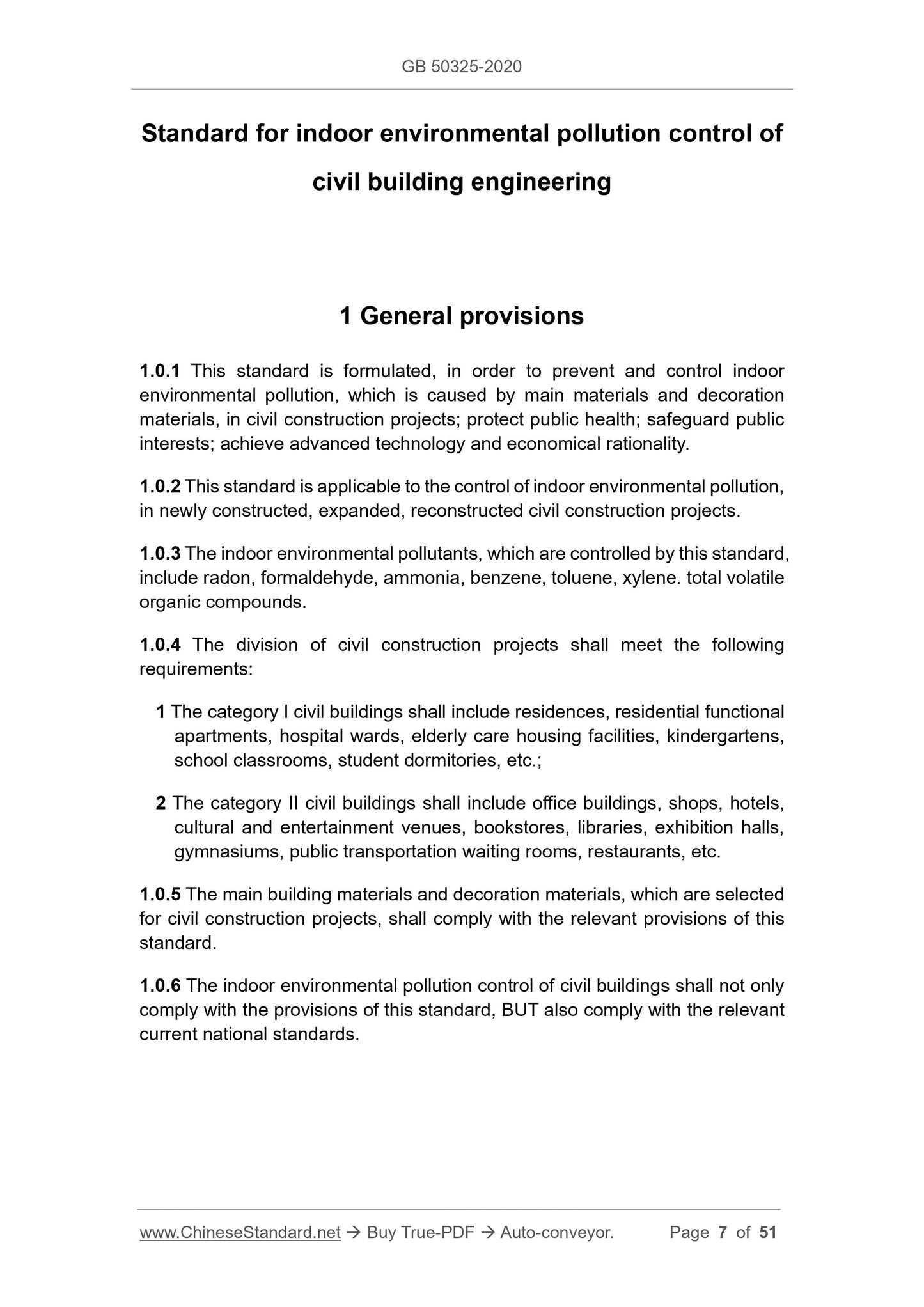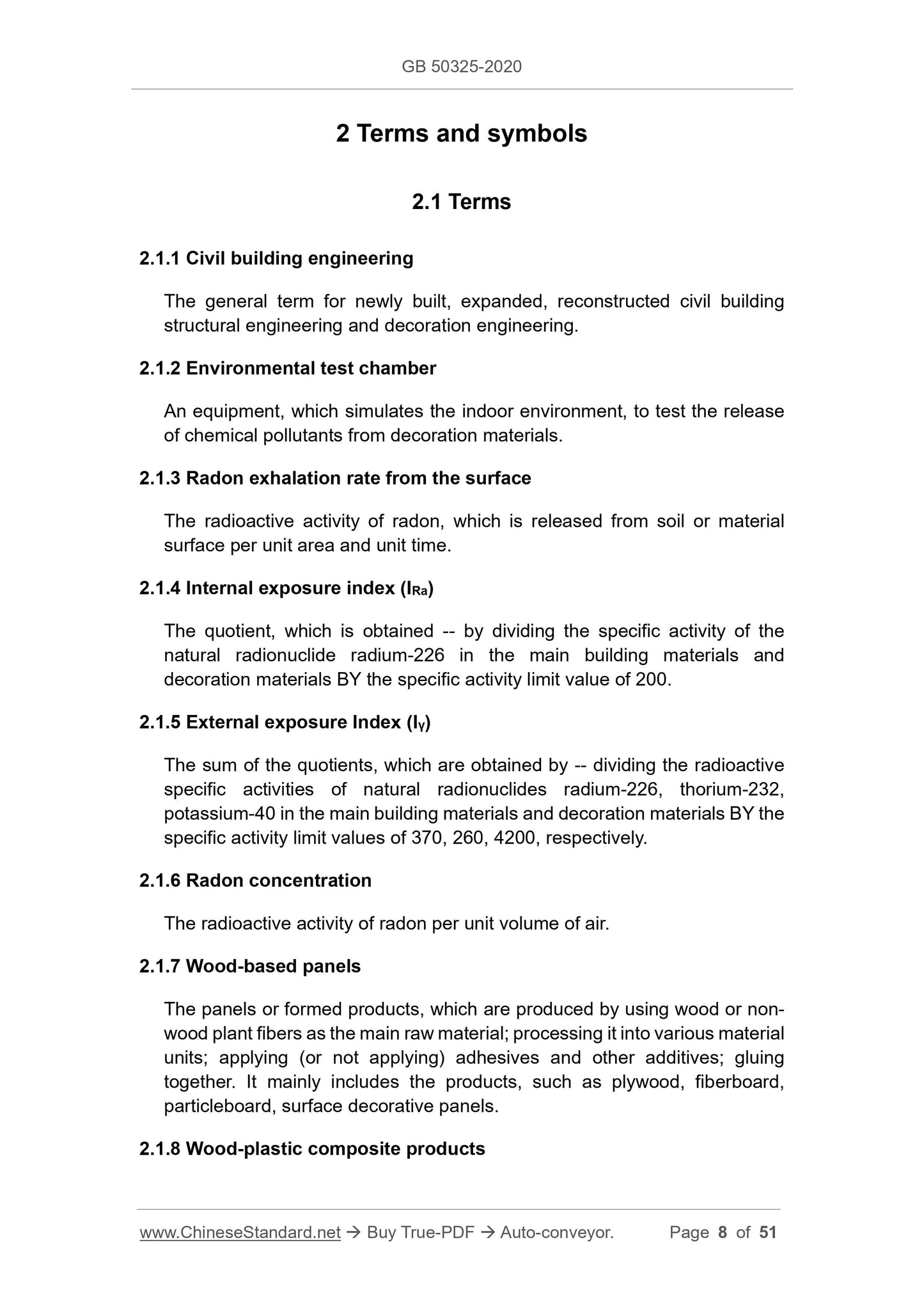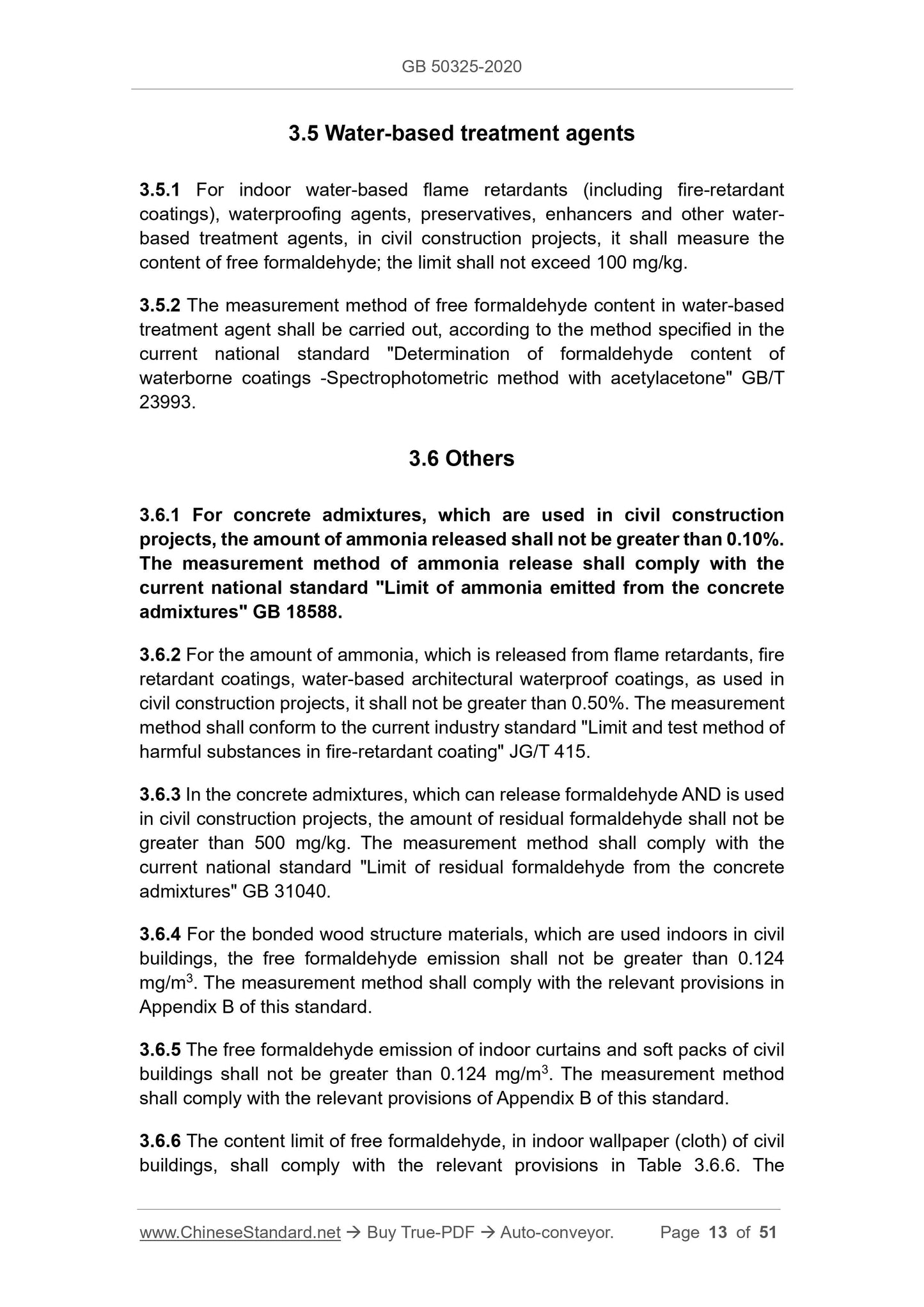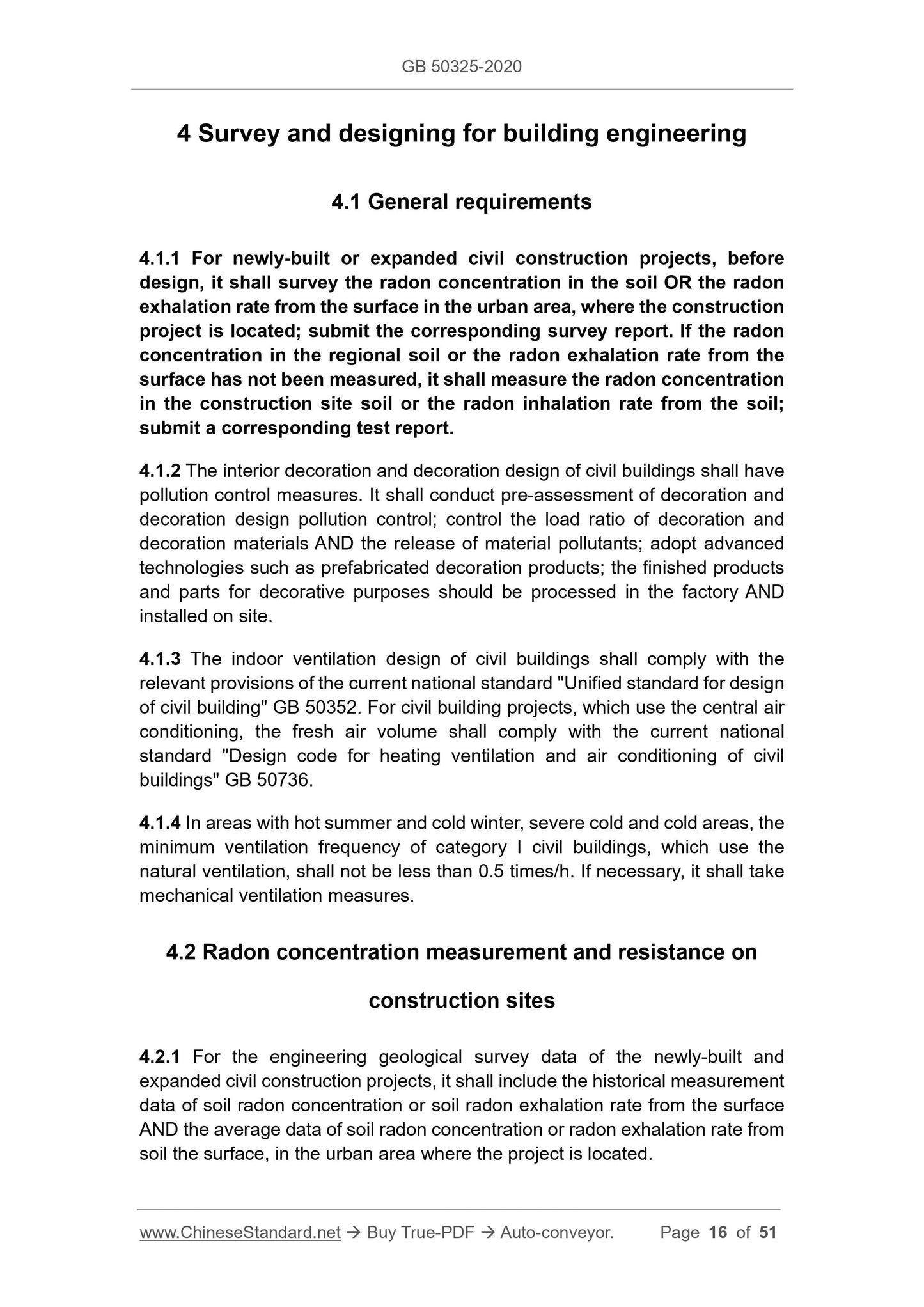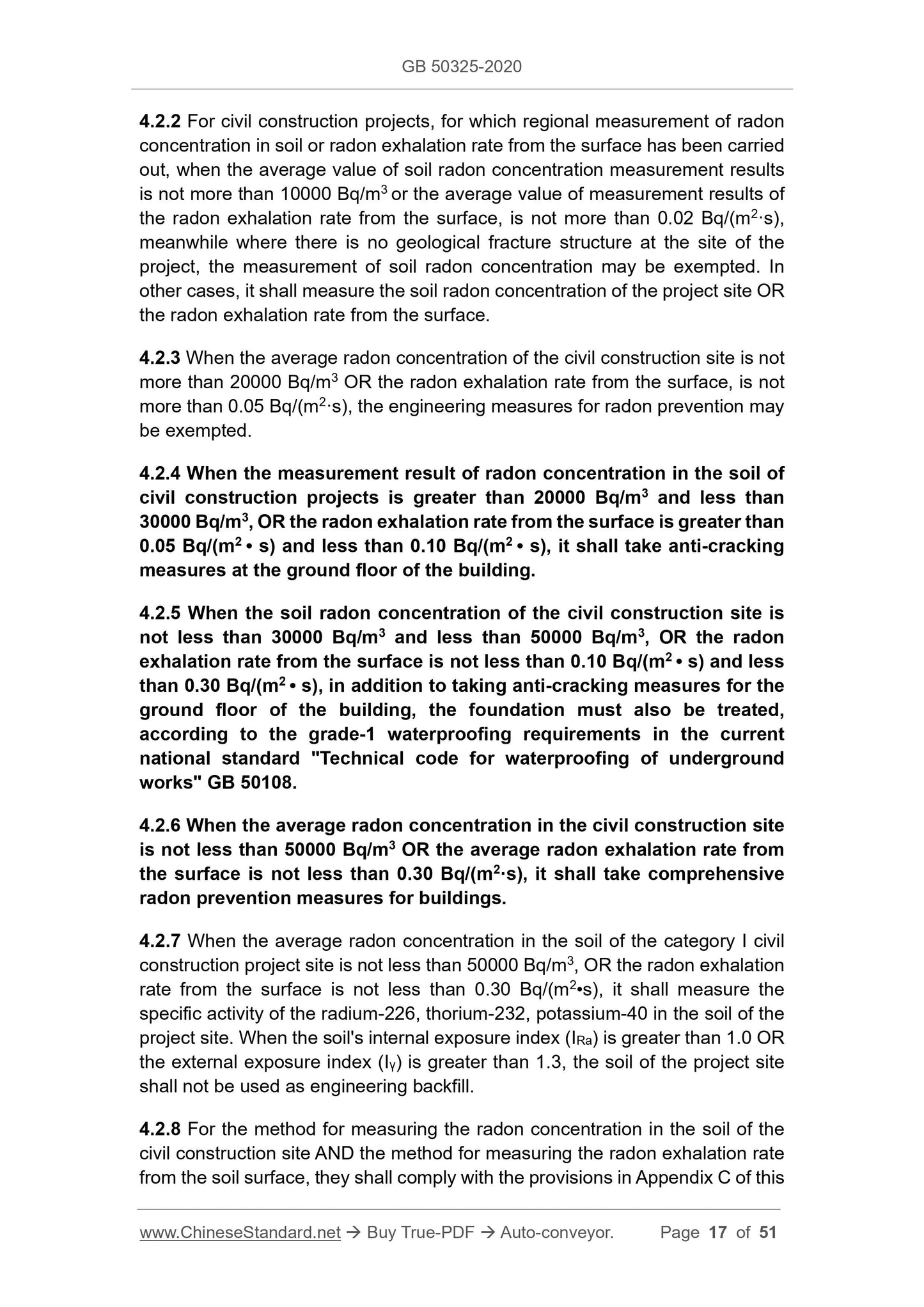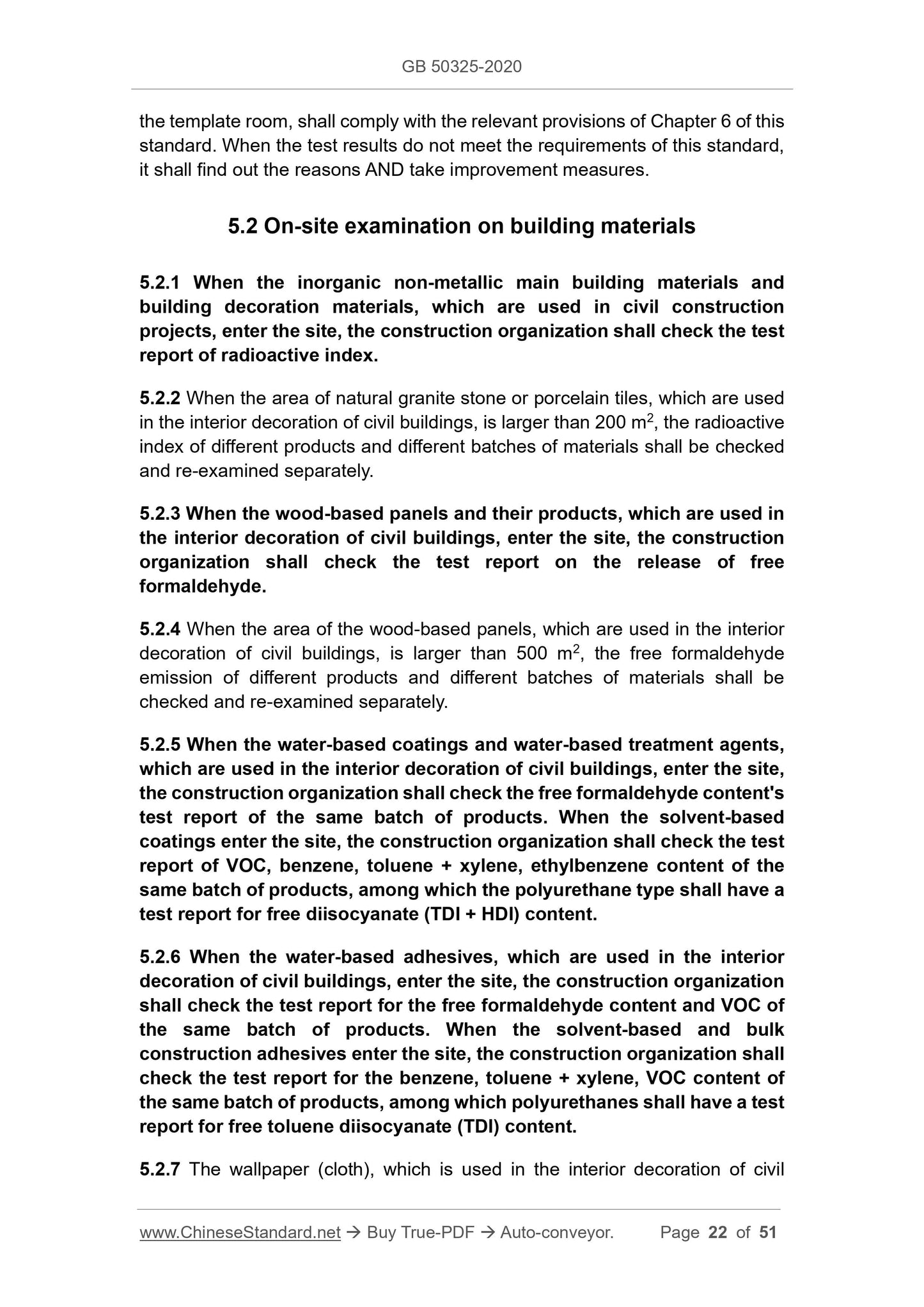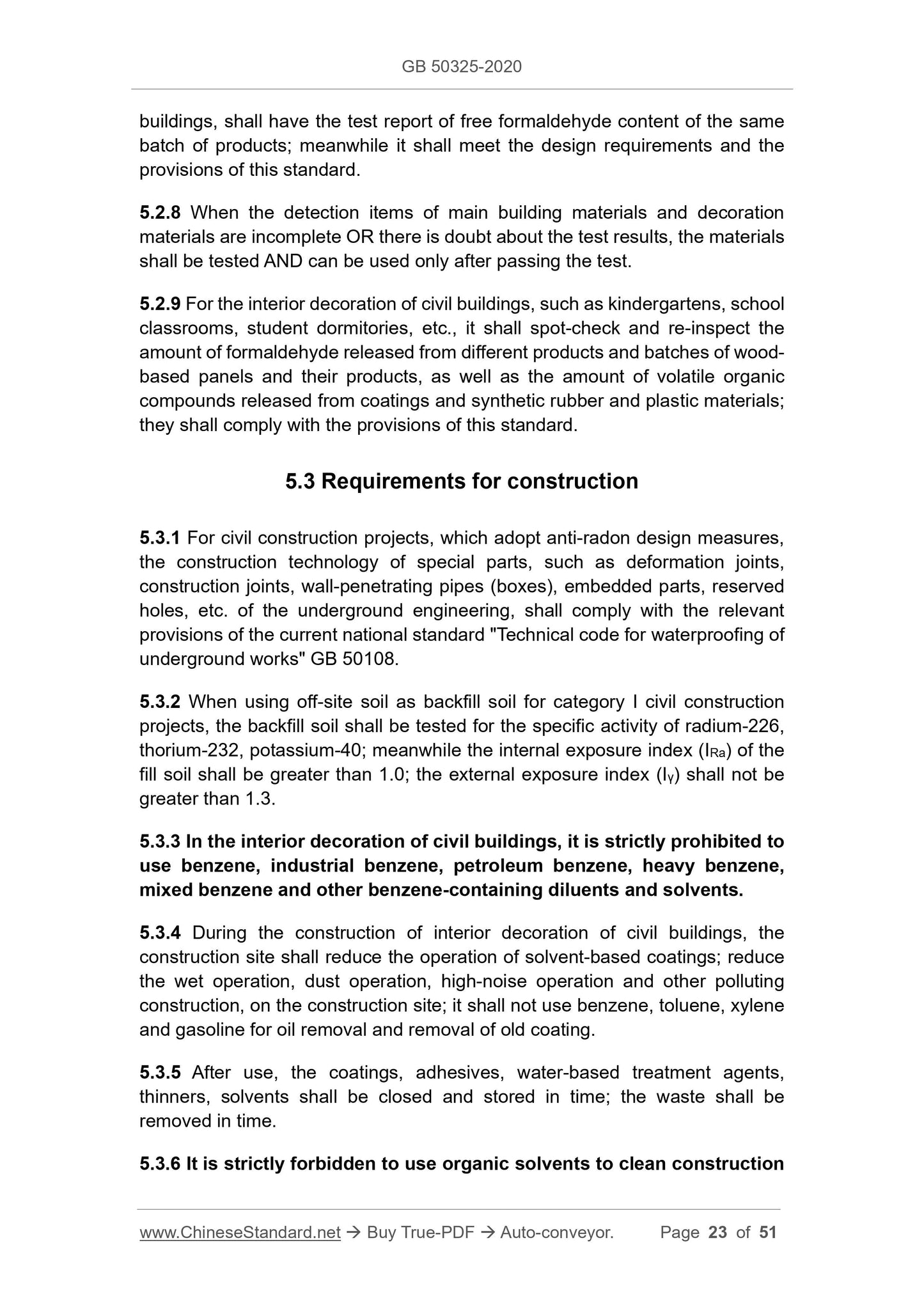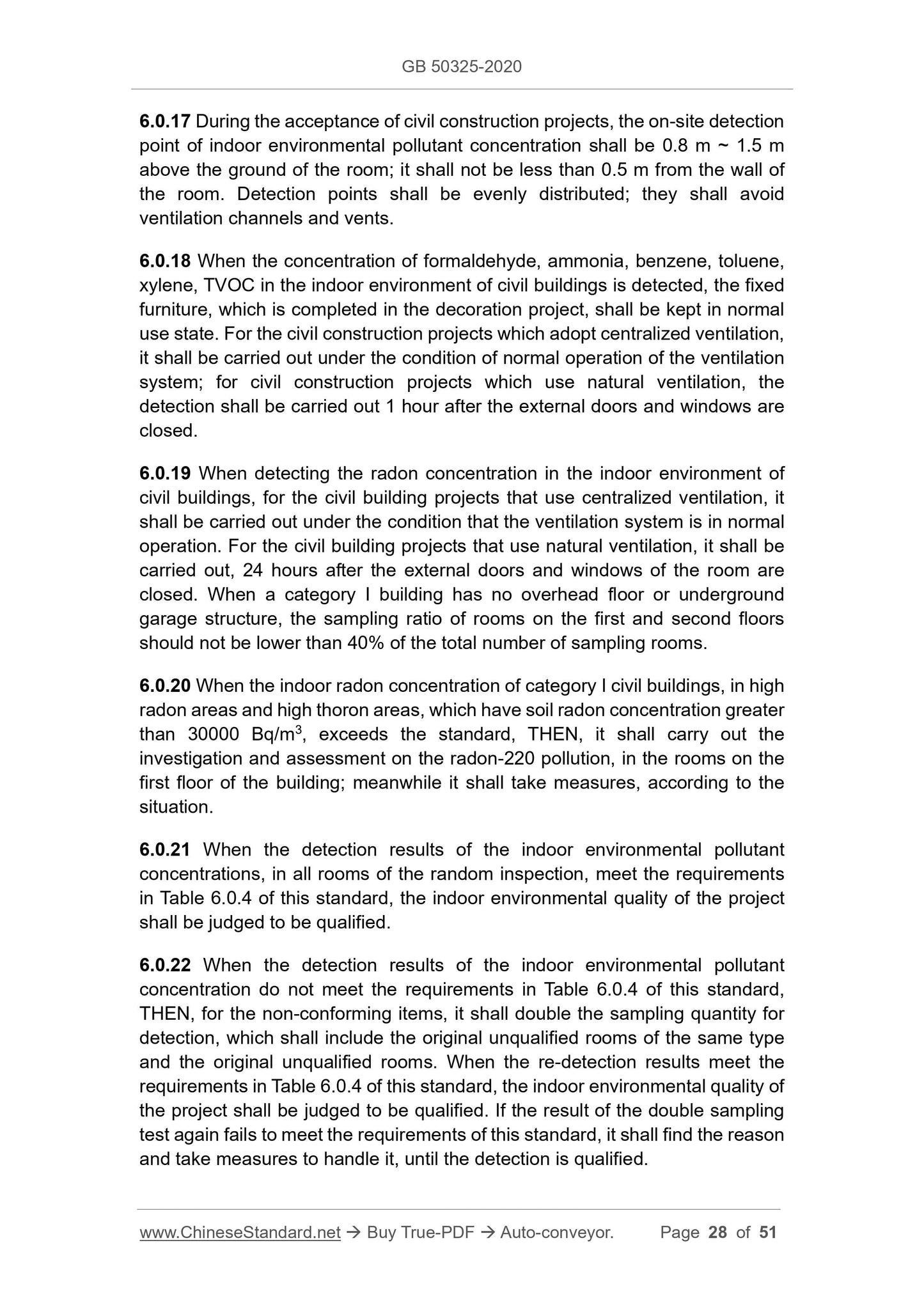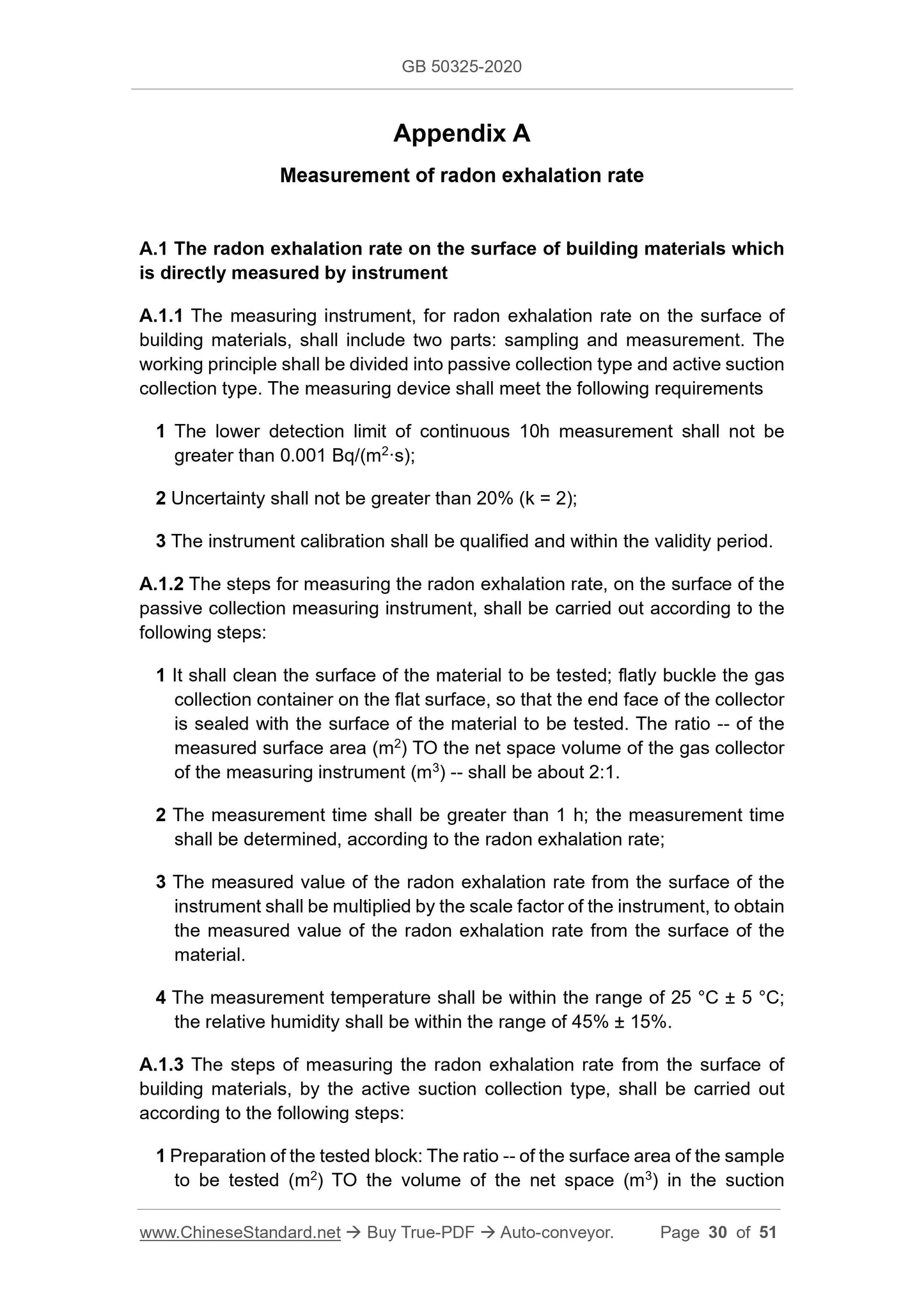1
/
of
11
www.ChineseStandard.us -- Field Test Asia Pte. Ltd.
GB 50325-2020 English PDF
GB 50325-2020 English PDF
Regular price
$560.00
Regular price
Sale price
$560.00
Unit price
/
per
Shipping calculated at checkout.
Couldn't load pickup availability
GB 50325-2020: Standard for indoor environmental pollution control of civil building engineering
Delivery: 9 seconds. Download (and Email) true-PDF + Invoice.Get Quotation: Click GB 50325-2020 (Self-service in 1-minute)
Newer / historical versions: GB 50325-2020
Preview True-PDF
Scope
1.0.1 This standard is formulated, in order to prevent and control indoorenvironmental pollution, which is caused by main materials and decoration
materials, in civil construction projects; protect public health; safeguard public
interests; achieve advanced technology and economical rationality.
1.0.2 This standard is applicable to the control of indoor environmental pollution,
in newly constructed, expanded, reconstructed civil construction projects.
1.0.3 The indoor environmental pollutants, which are controlled by this standard,
include radon, formaldehyde, ammonia, benzene, toluene, xylene. total volatile
organic compounds.
1.0.4 The division of civil construction projects shall meet the following
requirements.
1 The category I civil buildings shall include residences, residential functional
apartments, hospital wards, elderly care housing facilities, kindergartens,
school classrooms, student dormitories, etc.;
2 The category II civil buildings shall include office buildings, shops, hotels,
cultural and entertainment venues, bookstores, libraries, exhibition halls,
gymnasiums, public transportation waiting rooms, restaurants, etc.
1.0.5 The main building materials and decoration materials, which are selected
for civil construction projects, shall comply with the relevant provisions of this
standard.
1.0.6 The indoor environmental pollution control of civil buildings shall not only
comply with the provisions of this standard, BUT also comply with the relevant
current national standards.
Basic Data
| Standard ID | GB 50325-2020 (GB50325-2020) |
| Description (Translated English) | Standard for indoor environmental pollution control of civil building engineering |
| Sector / Industry | National Standard |
| Classification of Chinese Standard | P30 |
| Classification of International Standard | 91.040.01 |
| Word Count Estimation | 86,898 |
| Date of Issue | 2020-01-16 |
| Date of Implementation | 2020-08-01 |
| Issuing agency(ies) | Ministry of Housing and Urban-Rural Development of the People's Republic of China; State Administration for Market Regulation |
Share
